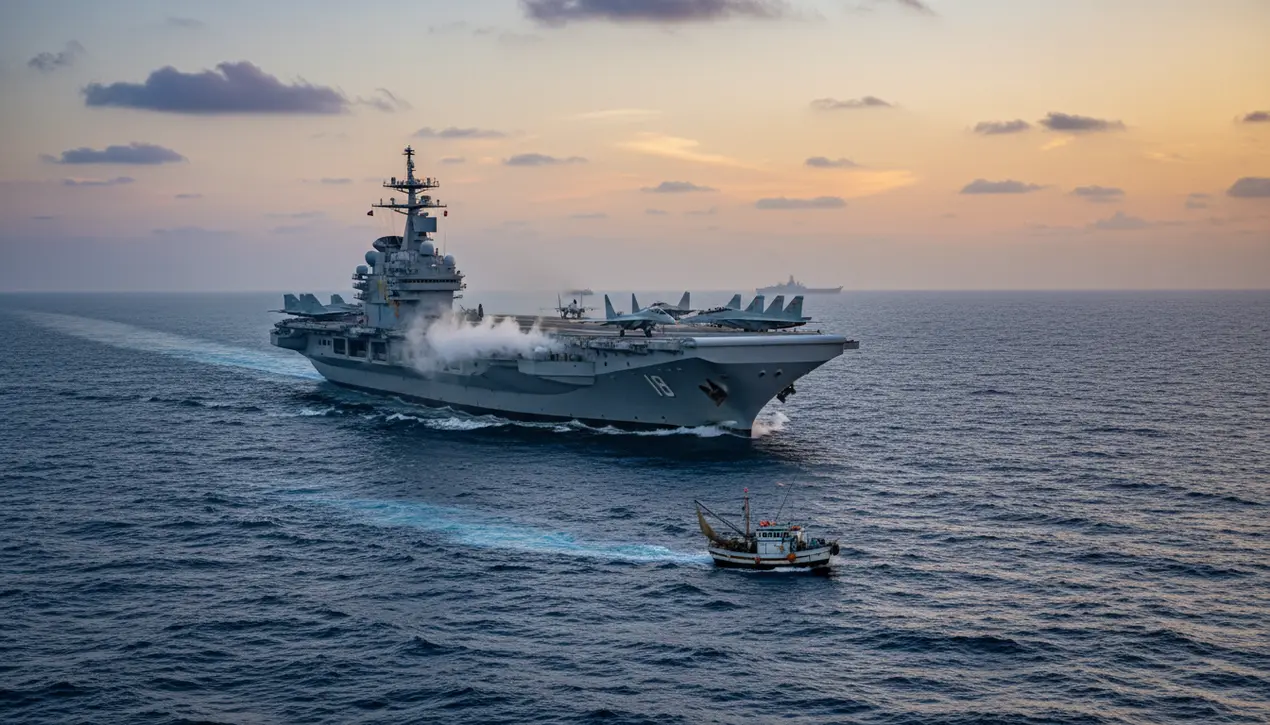
Politicsconflict & defenseMilitary Operations
China's New Aircraft Carrier Shifts South China Sea Dynamics.
OL
Oliver Scott
3 hours ago7 min read
The commissioning of China's Fujian aircraft carrier by President Xi Jinping on November 5 marks a pivotal inflection point in the strategic calculus of the South China Sea, a move that fundamentally recalibrates the regional power equilibrium beyond simple numerical comparisons of naval assets. This is not merely about China becoming the second nation, after the United States, to deploy an electromagnetic catapult system—a technology that enables more rapid and diverse aircraft sorties, including heavier payloads and early-warning planes.The near-simultaneous crash of two U. S.Navy aircraft from the USS Nimitz into the same contested waters acts as a stark, almost symbolic, counterpoint, crystallizing a new and volatile phase of great power competition. The relevant metric is no longer the gross tally of eleven U.S. carriers versus China's three; it is the localized, concentrated force that the United States can sustainably project into the Western Pacific against the rapidly modernizing, home-field advantage of the People's Liberation Army Navy (PLAN).The Fujian, likely to be operational after several years of sea trials, represents a generational leap from China's previous two carriers, the Liaoning and Shandong, which utilized less efficient ski-jump launch systems. This technological parity in launch mechanisms allows China to entertain operational concepts previously the sole domain of the U.S. Navy, complicating American power projection in a region dense with crucial sea lanes and disputed territorial claims.We must analyze this through the lens of political risk and scenario planning. A primary scenario involves an intensified 'gray zone' conflict, where the Fujian's presence emboldens China to more aggressively patrol and enforce its claims around features like the Spratly Islands, leading to heightened chances of a miscalculation or an incident at sea that could spiral.Another foreseeable consequence is the accelerated arms dynamics within the region, compelling nations like Japan and Australia to further invest in anti-access/area denial (A2/AD) capabilities, such as long-range anti-ship missiles and submarines, while simultaneously driving them into a tighter strategic embrace with Washington. The economic shockwaves of any major confrontation in these waters would be immediate and severe, disrupting over $3 trillion in annual trade and triggering volatility in global energy and shipping markets.From a risk-analysis perspective, the deployment of the Fujian shifts the military balance in a way that makes the status quo increasingly unstable. It provides Beijing with a potent symbol of national prestige and a flexible platform for both coercion and diplomacy, potentially altering the calculations of Southeast Asian nations who now must navigate an ever-more pronounced Sino-American rivalry.The long-term strategic picture suggests a continued erosion of unchallenged U. S. naval primacy in the Western Pacific, moving towards a contested and fragmented operational environment where the risks of a direct clash, while still low, are now significantly higher than they were just one month ago.
#China
#PLA Navy
#aircraft carrier
#Fujian
#South China Sea
#US Navy
#electromagnetic catapult
#military balance
#featured
Stay Informed. Act Smarter.
Get weekly highlights, major headlines, and expert insights — then put your knowledge to work in our live prediction markets.
Comments
Loading comments...
© 2025 Outpoll Service LTD. All rights reserved.